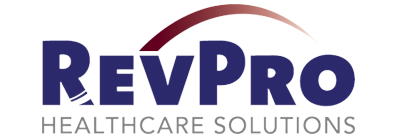In today’s challenging economic climate, medical practices face a delicate balance: maintaining financial stability while supporting patients struggling with rising living costs. Understanding how to effectively manage patient collections without compromising care quality has become more crucial than ever.
To improve patient collections while being mindful of financial hardship, medical practices should:
- Implement pre-visit financial clearance
- Offer flexible payment options including installment plans
- Utilize digital payment solutions
- Provide transparent cost estimates
- Verify insurance coverage multiple times
- Consider financial assistance programs
Insurance Verification
A Critical First Step Preventing collection issues starts with thorough insurance verification. Medical practices should verify coverage at three key points: appointment scheduling, 48-72 hours before the visit, and at check-in. This multi-step approach helps identify potential coverage issues early, reducing claim denials and patient frustration. Modern practice management software can automate much of this process, saving valuable staff time.
Pre-visit Financial Clearance
Research shows that collection rates drop significantly after service delivery – from 90% at check-in to 40% just one month after the visit. Implementing pre-visit financial clearance helps both practices and patients by:
- Determining expected out-of-pocket costs
- Identifying eligible financial assistance programs
- Creating realistic payment arrangements before services
- Reducing surprise billing situations
Digital Payment Solutions
Modern payment technology can significantly improve collection rates while offering convenience to patients. Consider implementing:
- Patient portals with secure payment options
- Text message payment reminders
- Digital statements with immediate payment capabilities
- Mobile payment options
- Automated payment plan scheduling
Remember that all digital solutions must maintain HIPAA compliance and robust security measures to protect patient information.
Flexible Payment Options
With inflation affecting household budgets, flexible payment options have become essential. Consider:
- Income-based sliding scale fees
- Interest-free payment plans
- Early payment discounts
- Hardship assistance programs
- Partnerships with medical credit providers
Cost Transparency
Clear communication about costs help patients make informed decisions about their care. Provide:
- Detailed cost estimates before services
- Explanation of insurance coverage and patient responsibility
- Information about available payment options
- Regular updates on account balances
- Clear billing statements in plain language
Staff Training and Communication
Ensure your staff is equipped to handle sensitive financial discussions by:
- Training in empathetic communication
- Understanding available payment options
- Knowing when to refer to financial counseling
- Maintaining consistent collection protocols
- Documenting all payment-related conversations
Financial Assistance Programs
Develop comprehensive financial assistance programs that:
- Set clear eligibility criteria
- Offer varying levels of assistance
- Include application procedures
- Maintain compliance with state and federal regulations
- Provide clear documentation requirements
By implementing these strategies thoughtfully, medical practices can maintain financial stability while supporting patients through economic challenges. Regular review and adjustment of these policies ensures they remain effective and appropriate for both the practice and its patient population.
Remember that efficient patient collections don’t have to mean aggressive collection tactics. A well-designed system that emphasizes communication, flexibility, and compassion can actually improve collection rates while maintaining positive patient relationships.

